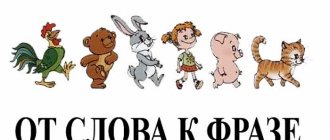A sentence is a speech unit that combines several words related to each other. Each such construction has a specific meaning and intonation. There are several types of sentence intonation. They can also end accordingly using different punctuation marks. What are the suggestions for the purpose of the statement and intonation?
Basic elements of intonation
Our speech is enriched by various elements, making it expressive, emotional, rich.
- Speech melody (raising and lowering voice)
- Logical stress (highlighting in the voice the most important word)
- Pause (temporary stop of speech)
- Tempo (speech speed)
- Tone (sound coloring that gives emotional shades to speech)
These elements enhance the impact of speech on the listener. Without them, our speech would be lifeless, gray, inexpressive.
What signs end different types of phrases in written speech?
Types of sentences by intonation and purpose are highlighted in writing in different ways. It is punctuation that allows a person to understand what speech structures, by purpose and intonation, are on paper or the screen of an electronic device in front of him.
You need to know the following punctuation rules:
- A narrative non-exclamatory phrase ends with a period. (“The long-awaited summer has come”).
- An interrogative non-exclamation construction ends with a question mark. (“When will your dad come home from work?”).
- An incentive non-exclamatory phrase requires a period at the end. (“Stop being capricious and eat.”).
- A declarative exclamatory statement ends with an exclamation mark. (“I feel so good today!”).
- The interrogative exclamation structure ends with two marks - a question mark and an exclamation mark. (“Can I go mushroom picking too?!”).
- An exclamatory statement must end with an exclamation mark. (“For the faint of heart, please leave the audience!”).
When the types of sentences expressed are especially emotional, you can put several exclamation marks at once. (“Caution, there’s a cliff ahead!!!”).
If the construction has the effect of incompleteness, then it is necessary to put an ellipsis at the end of the statement. ("I'm really sorry…").
Now it’s clear what sentences there are based on intonation and purpose. It is important to know their features so that your statements are correctly perceived by people around you, both orally and in writing.
Sentence intonation
The intonation of a sentence is its melodic and vocal design. Each type of sentence has its own intonation. Rising-falling intonation is characteristic of narrative sentences. In an interrogative sentence, intonation can be descending, rising, ascending-descending, depending on the place of logical stress. Incentive sentences are pronounced with a rising tone, especially if they express an order rather than a request.
Intonation also performs a syntactic function: it indicates what type of sentence the sentence is, whether it contains a question, an exclamation, or a narrative.
The reader learns about the syntactic role of intonation from punctuation marks.
Types of designs according to purpose
Sentences based on the purpose of the statement are divided into narrative, interrogative, and incentive. Each of them has its own characteristics, which should be discussed in more detail.
Narration
Narrative constructions are the most frequently used sentences based on the purpose of the statement and intonation. Their goal is to convey information that is affirmed or, conversely, denied.
This design has a complete thought, which is conveyed using a certain tone. The characteristic of this type is that the person emphasizes the main word in a louder voice, and ends the statement in a low and calm tone.
This type occurs constantly in people’s speech. For example, when a child tells his peers: “Today my mother gave me a toy,” “I watched an interesting cartoon yesterday,” and so on.
Question
Constructions can also be interrogative. They are necessary in order to ask, to find out something from the interlocutor. What are the question type sentences? Such designs are divided into the following types:
- Generally interrogative, the purpose of which is to obtain confirmation or denial of certain information. The answer to them can be monosyllabic, simply “yes” or “no.” Example: “Igor was at work yesterday?”, “Do you have bread?”
- Private interrogatives, whose task is to obtain new information about a person, event, action, and so on. For example, “What time will the car arrive?”, “Who will be on duty today?”, “What weather is expected tomorrow?”.
A special intonation, which is used in oral speech, as well as a question mark used by a person in writing, helps to achieve the goals set for interrogative phrases. Question words also play an important role: Who? Why? When?, particles: really, really.
Also, such constructions are built in a certain order, first the question word is put, then all the other words, for example, “What time will you go to the cinema?”
Inducement
Suggestions regarding the purpose of the statement and intonation can also be motivating. Such designs involve some expression of human will. The purpose of such a phrase is to encourage another person to take some action.
Such a goal sentence is used when a person asks for something, orders something, or talks about his wishes to another person.
The objectives of an incentive sentence can be achieved through the use of a certain intonation, the form of the imperative mood of the predicates and some particles, for example, such as “let”, “come on”.
Conclusion
The types of sentences according to the purpose of the statement are as follows: narrative, motivation and question. The first type is the most common: it is on it that most texts are based. Each type of statement has its own characteristics and characteristics.
Exclamatory sentence
A sentence in which the expression of the content of a thought is accompanied by an expression of the speaker's feelings. The constructive elements of exclamatory sentences are interjections, emotional particles, and exclamatory intonation. Any of the sentences according to the purpose of the statement (narrative, incentive, interrogative) can become exclamatory. Such a nice evening
(Chekhov).
Let me have a look!
(Bitter).
And what kind of miracles happen during the sowing season!
(Kazakevich).
Dictionary-reference book of linguistic terms. Ed. 2nd. - M.: Enlightenment. Rosenthal D. E., Telenkova M. A. 1976.
See what an “exclamation sentence” is in other dictionaries:
- exclamatory sentence
- A sentence in which the expression of the main content of a thought is accompanied by the expression of the speaker’s feeling associated with this content and conveyed through special words (interjections, etc.) or exclamatory intonation: What baseness!; Where... Dictionary of linguistic terms T.V. Foal
Exclamatory sentence
- sentences characterized by emotion. coloration and increased expressiveness. They differ in specificity. intonation, timbre coloring, cf.: Fire! We're on fire! They often contain interjections, particles, and exclamations. pronominal words, cf.: Oh yes... ... Russian humanitarian encyclopedic dictionary
This term has other meanings, see Sentence. A sentence (in language) is the minimum unit of language, which is a grammatically organized combination of words (or a word) that has semantic and intonation... ... Wikipedia
A sentence (in language) is the minimum unit of human speech, which is a grammatically organized combination of words (or a word) that has semantic and intonation completeness. (“Modern Russian language” by N. S. Valgina) ... Wikipedia
A sentence (in language) is the minimum unit of human speech, which is a grammatically organized combination of words (or a word) that has semantic and intonation completeness. (“Modern Russian language” by N. S. Valgina) ... Wikipedia
A one-part sentence, the main member of which, denoting the presence, existence of an object or phenomenon in the present or outside of time, is expressed by a noun, personal pronoun, substantivized part of speech, having the form ... ... Dictionary of linguistic terms - 1) the 1st person form of the verb is replaced by the 3rd person face; 2) personal pronouns of the 1st, 2nd person, possessive my, your are replaced by pronouns of the 3rd person or a noun is used; 3) if someone else’s speech is an incentive ... Syntax: Dictionary-reference
27.
Read it.
- Guys! I stand in sentences in order to highlight excitement, anxiety, admiration, victory, triumph! Where am I, those sentences must be pronounced with special expression! (A. Tetivkin)
- How should you pronounce sentences with an exclamation point? When are such sentences used in speech?
Note! Sentences vary in intonation
.
28.
Read it.
- What feeling are these lines filled with? Read, conveying this feeling with intonation. Tell me, what is the intonation of each sentence? Explain your answer.
- Write down poetic lines.
- Moscow! How much in this sound has merged for the Russian heart! How much resonated with him! (A. Pushkin)
29.
Read it. Write by inserting the missing letters.
- Read expressively. Determine the type of each sentence by intonation: exclamatory or non-exclamatory?
- Autumn came into the dark dense forest. How many fresh pine trees there are in the green pine trees! How many scarlet berries.. At the rowan tree!.. (E. Trutneva)
30.
Read it.
1. The plane is flying. 2. A thunderstorm is coming. 3. Who broke the birch branch? 4. What a pity for this birch tree. 5. Don't break tree branches. 6. Let there be peace throughout the world.
- Determine what kind of sentences these are by the purpose of the statement and by intonation.
- Read the sentences again, but say them with an exclamatory intonation.
- What feeling did you express in each of the exclamatory sentences?
Types of offers
Note! An exclamation mark is placed at the end of exclamatory and motivating sentences.
.
At the end of an exclamatory interrogative sentence, both a question mark
and
an exclamation mark
.
31.
Read the diagram “Types of Proposals”. Tell us what you know about the types of sentences and punctuation marks at the end of these sentences. Give your own examples for each type of sentence.
32.
Read the poem.
There's no time to be bored
- Copy by choosing the correct punctuation mark from the brackets and inserting the missing letters. Explain your choice.
- Read the sentence that expresses the main idea of the poem.
- A bee sat down on a flower, lowered her h..boot (. !) Under the fly a mosquito was melting towards her: - What are you looking for there (? !) - Nectar (! ?) - Are you not tired, Are you not tired of looking (? !) - No (! ?) For those who are busy with business, There is simply no time to be bored (! ?) (G. Ladonshchikov)
33.
Read it.
You were in the meadow at the beginning of summer, how beautiful the grass is, tall and thick, and how many flowers there are all around, and what a smell the white inflorescences of meadowsweet smell especially strongly.
- Explain the meaning of the word meadowsweet.
- Is it possible to read this entry expressively? Why?
- Find the boundary of each sentence and read it with the correct intonation. Explain what punctuation you will use at the end of each sentence.
- Write down to indicate the beginning and end of sentences.
In Russian, simple sentences have several characteristics. They may contain a message about something, a question or a call to action. From this point of view, according to the purpose of the statement, simple sentences are divided into the following types:
- narrative
- interrogative
- incentive.
But besides this, there is one more characteristic of the proposal. All these types of sentences may differ in the strength of the feeling expressed in them. In addition to a message, a question or a call to action, an emotional background arises in them when the speaker expresses his attitude towards the message being communicated, introduces feelings or emotions into it.
Emotion
[fr.
emotion ] - a mental experience, emotional excitement (anger, fear, joy, etc.) that arises in humans and animals as a result of exposure to external and internal stimuli.
Dictionary of foreign words. M., Russian language, 1980
Means of expressing exclamations
In addition to the special intonation that is used in exclamatory sentences, there are special “exclamatory words” in the Russian language:
- well, what kind of, how, let, see
(particles); - ah, oh, eh, wow, alas, fie
(interjections); - what, who, which, how many, how, where
(pronouns and adverbs).
What eyes!
What a handsome man, just a sight for sore eyes!
That's what you are, it turns out!
How brightly the sun shines!
Who's laughing so merrily here?!
Oh, how nimble we are!
Well, why are you telling me about this?!
Complex sentences
Let's consider what kind of complex sentences there are.
- Compound sentences are made up of simple independent sentences using conjunctions called coordinating conjunctions: but, a, yes, or, either, and, but, however. There are also complex coordinating conjunctions: that...that, or...that, or, not that...not that. Example: “The wind blew away the clouds and the moon appeared”; “Then the daughter will look out the window, then the son will look at his watch.”
- Complex sentences consist of simple sentences, and one of the parts of such a sentence is grammatically dependent on the other. The parts are connected by allied words and subordinating prepositions: where, so that, what, where, why, which, whose. Subordinating conjunctions include: instead of, despite the fact that. A conjunctive word or subordinate conjunction is always present only in a subordinate clause. Example: “I know that they are colleagues”; "She doesn't want us to be late."
- Non-union proposals. Their parts are non-union sentences, usually independent, but not always have equal semantic rights; allied words and conjunctions are absent in such sentences. Examples: “It was raining, drops were knocking on the roof”; “I heard a knock and opened the door.”
Exclamatory sentences
Sentences pronounced in a special tone and with a special feeling are called exclamatory. Most often, phrases containing motivation require such intonation, but any other type can have an exclamatory coloring.
Sentences regarding the purpose of the statement and intonation are:
- Narrative exclamations: “Summer has come - how great it is!”
- Interrogative exclamations: “Will you never accept the truth?!”
- Incentive exclamations: “Give me my toy immediately!”
Emotional coloring
In addition to the communicative purpose of a sentence, there is another characteristic - emotional coloring. On this basis, speech constructions are divided into exclamatory and non-exclamatory. The first are pronounced loudly, with feeling, and the second - in a calmer tone.
The most common mistake when determining the purpose of a statement is to identify the latter with emotional connotation: it seems as if a declarative sentence ends with a period, an interrogative sentence with a question mark, and an incentive sentence with an exclamation mark. In fact, this is wrong, since absolutely any phrase can be pronounced with increased intonation .
- Non-exclamatory sentences. These are the majority of statements. They are pronounced calmly, in a casual tone and without much emotion. Most often these are narrative or interrogative sentences, less often - incentive ones. Examples: “The morning was warm and sunny”, “Where is this music coming from?”, “Take a book from the shelf, please.”
- Exclamatory sentences. They express feelings and convey emotions, therefore they are pronounced in a special tone, with speeding up or slowing down the tempo of speech, and raising the voice. Most often, such sentences are motivating, but interrogative and narrative messages can also be pronounced with exclamatory intonation. Examples: “Get out into the yard quickly!”, “How can you believe in this?!”, “December is a magical month!”
Table of combinations of characteristics according to the purpose of the statement and the emotional coloring
| Narrative | Interrogative | Incentives | |
| Exclamation marks | What a wonderful flower! | Are you really going there?! | Catch up! |
| Non-exclamation | Morning has come. | Shall we play chess? | Move forward please. |
"Is not it?"
Sometimes we are so overwhelmed with emotions that we expect our interlocutor to share them. Let's say we make some observation, for example:
When we expect that the interlocutor will most likely agree with us, we add to this phrase words like “after all,” “truth,” “isn’t it true,” “tell”:
In English, all these words come down to one single construction, which is connected as a “tail” at the end of the sentence. We take the main auxiliary verb indicating time (is/was/will be) and negate it:
If we had sentences with action, then we will have to “pull out” this verb, depending on what time it was.
If it’s real, then pull out do
.
If it’s past, pull out did
.
If the future is will
.
Such a “tail” is good to attach to exclamations with what
:
Read more about such issues in our article.
Exclamations with “How..!” (“How..!”, “What..!”)
Unlike what
,
how
attaches only adjectives (that is, words denoting characteristics).
However, we can make such exclamations a little more complicated. To do this, we need a structure that allows us to evaluate the action. For example:
In English this is expressed using the construction:
Examples:
If we want to imbue these phrases with emotion using "How", then the order should be as follows:
Examples:
So we have looked at the main types of exclamations in English. Use them, and your speech will become livelier and more varied!










